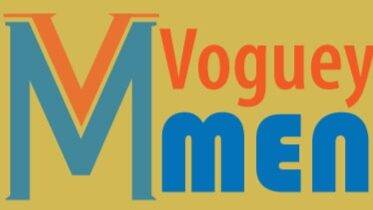The seventies weren’t just another chapter in fashion history—they were a full-blown spectacle. It was the decade when men’s style got loud, experimental, and deliciously unbuttoned. Flared pants swished across sidewalks and dance floors, shirts shimmered with satin and sequins, and hair grew long and wild, just like the spirit of the times. One moment, a rock god might strut on stage in lamé and eyeliner; the next, a film star would stroll the red carpet in a velvet tux and tinted shades. From rock gods to disco kings, runway rebels to screen legends, these cats ruled every dance floor, stage, and photo spread. Music men led the charge—turning concerts into catwalks, album covers into mood boards, and themselves into style prophets. These 25 Fashion Icons of 70s didn’t just wear fashion—they performed it, lived it, stretched its seams, and left a legacy we’re still drawing from today.
Meet the style mages of the groovy seventies—each one a master of his own unforgettable look.
David Bowie – The Shape-Shifting Style Oracle of the Seventies

The pop visionary of the 70s, David Bowie sold over 100 million records and turned Ziggy Stardust into a global phenomenon. A master of sound and self-image, he didn’t follow fashion—he invented it. With every persona came a new style: glitter leotards, kabuki-inspired robes, or razor-sharp suits. His 1973 Tokyo shoot in a Kansai Yamamoto kimono remains an iconic fashion moment. Bowie’s legacy lies in his fearless reinvention—he gave men permission to be strange, beautiful, and unapologetically expressive.
Mick Jagger – The Swaggering Peacock of Rock ’n’ Roll
As the electrifying frontman of The Rolling Stones, Mick Jagger defined rock stardom. With countless platinum albums and a legacy of sold-out tours, his stage presence was matched only by his flamboyant style. From skintight jumpsuits to feathered boas and velvet trousers, Jagger turned each performance into a fashion spectacle. His 1975 U.S. tour ensembles—especially the rhinestone catsuits—sealed his status as a sartorial provocateur. Equal parts glam and grit, Jagger blurred the lines between masculine cool and glittering excess.

Elton John – Glam Rock Flamboyance and Shades that Stunned the World
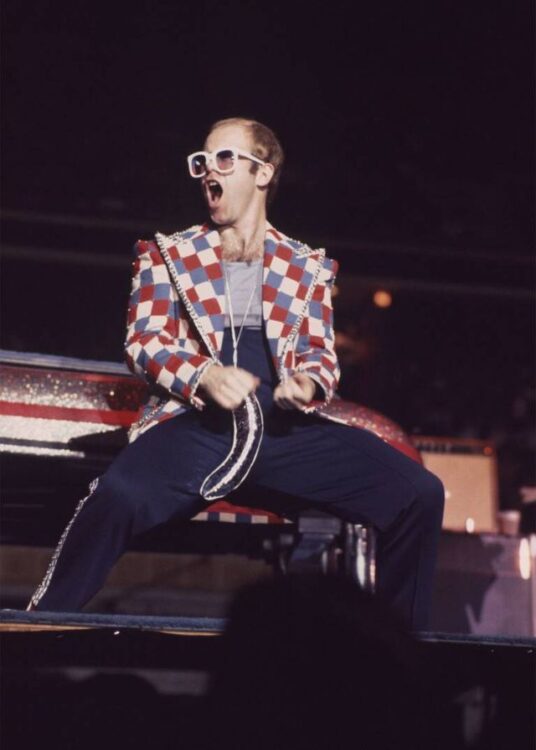
With more than 300 million records sold and a knighthood to his name, Elton John was the flamboyant piano genius who made fashion shine as brightly as his melodies. His heart-shaped, rhinestone-studded, butterfly-winged, and star-framed glasses weren’t just accessories—they were statements, each pair as flamboyant as his sequined suits. The 70s were his era of excess—towering platform boots, sequined suits, feathered capes, and above all sunglasses in every shape imaginable. His 1974 Dodgers Stadium concert outfit—a rhinestone-encrusted baseball uniform and star-shaped shades—was pure glam rock spectacle. Elton proved that theatricality and musical brilliance could go hand-in-hand—and look fabulous doing it.
Hideki Saijo – Japan’s Rock Sensation and Dazzling Poster Boy of 70s Style
Born in 1955, Hideki Saijo rose to stardom as a singer and performer whose energy and sparkle lit up Japan’s pop culture. He was Japan’s brightest pop idol of the 1970s, with electrifying performances and a charisma that rivaled Western rock stars. Known for hits like Young Man (Y.M.C.A.), he embodied flamboyance in fashion, especially with his love for sharply tailored suits paired with dramatic flared-bottom pants. This silhouette, combined with vibrant shirts, bold stage presence, and creative accessorization turned him into a cross-cultural sensation. Saijo’s style wasn’t just Japanese cool—it was global glamour that redefined 70s pop fashion.

Rod Stewart – The Raspy-Voiced Dandy of London Cool

The gravel-voiced crooner of hits like Maggie May and Do Ya Think I’m Sexy?, Rod Stewart was a chart-topping star whose fashion sense matched his flair for performance. A former mod turned glam-rock style king, he strutted in leopard prints, satin trousers, and plunging necklines. His shag-blond hair and rakish charm defined London cool. One unforgettable look: a pinstripe suit worn bare-chested with platform boots. Rod’s fashion was sexy, cheeky, and stylishly unbuttoned—just like his music.
image source: vintag.esp
Marc Bolan – The Glitter Prophet of Glam Rock
The poetic voice behind T. Rex, Marc Bolan ignited the glam rock movement with chart-toppers like Get It On and Telegram Sam. He wasn’t just a singer—he was a fashion revolution in rhinestones. Bolan fused hippie romanticism with glitter-drenched androgyny: feather boas, satin trousers, and high-heeled boots. His corkscrew curls and shimmery jackets lit up Top of the Pops. A defining moment? His appearance on The Midnight Special in a metallic jumpsuit and cosmic makeup—glam rock, crystallized.
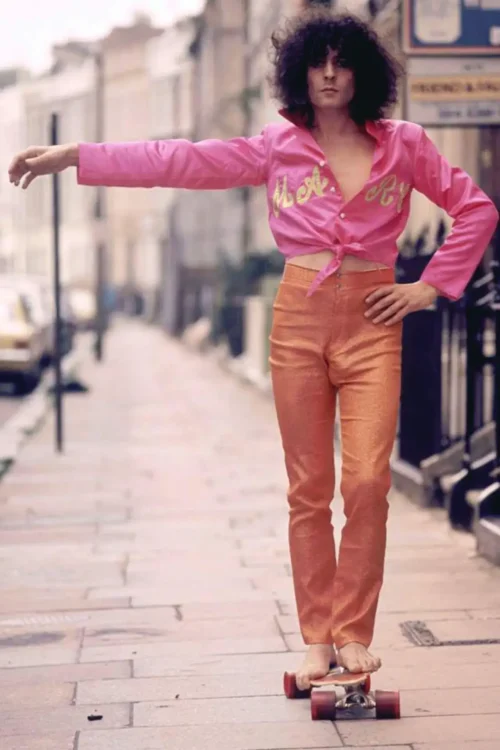
Keith Richards – The Ragged King of Rock ’n’ Roll Cool
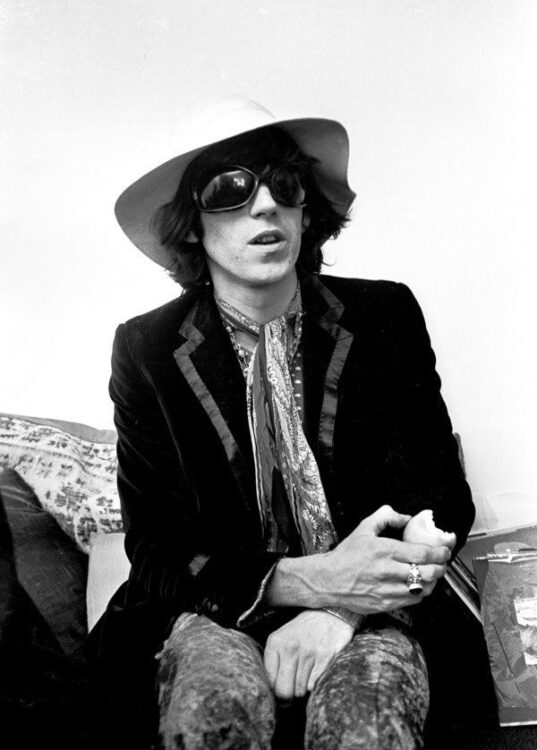
As co-founder and lead guitarist of The Rolling Stones, Keith Richards embodied the gritty soul of rock. His riffs powered classics like Angie and Beast of Burden, but his outlaw fashion made just as much noise. With skull rings, layered scarves, eyeliner, and velvet blazers, Keith channeled a decadent, bohemian pirate. His 1973 European tour look—open shirt, waistcoat, and bandana tied to the mic—became a blueprint for rock swagger. Keith didn’t follow fashion. He lived it, wrecked it, then made it cool again.
Sly Stone – The Psychedelic Funk Visionary with Kaleidoscopic Style
Born Sylvester Stewart, this American music maestro (known by stagename Sly Stone) fused soul, funk, and rock into genre-breaking anthems like Thank You (Falettinme Be Mice Elf Agin). His music was revolutionary—and so was his look. With towering Afro, technicolor prints, capes, fur coats, and platform shoes, Sly embodied Afro-futuristic funk. His 1971 Soul Train performance in a gold lamé jumpsuit and round-frame shades defined his boundary-pushing aesthetic. Sly wasn’t just funky—he made fashion a form of psychedelic liberation.
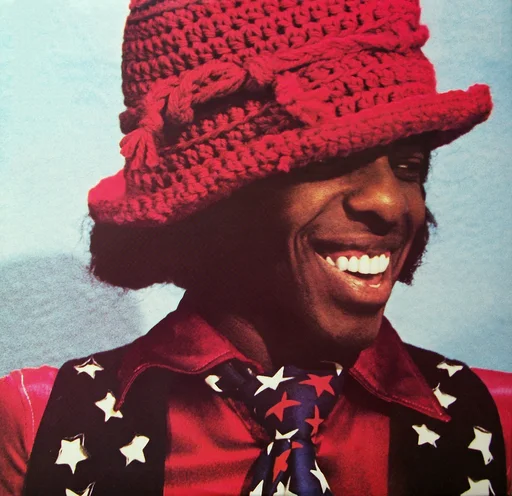
John Travolta – The Disco Poster Boy in White Polyester
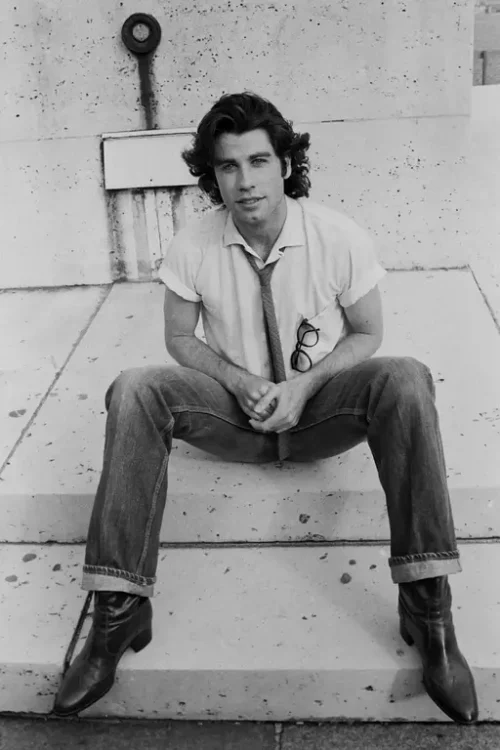
With Saturday Night Fever (1977), John Travolta became the face—and body—of disco culture. The film grossed over $200 million and turned Travolta into a global sex symbol overnight. His strut across the dance floor in a white three-piece suit, flared pants, and wide-collared shirt became one of the most replicated fashion moments in pop history. Travolta’s blow-dried hair and tailored flash brought disco to the masses. He made dressing up cool again—one pelvic thrust at a time. British GQ
Steve McQueen – The King of Cool in Tactical Neutrals
Star of The Getaway and Papillon, Steve McQueen was the 70s’ action hero with an unshakable sense of style. His wardrobe—Barbour jackets, Persol sunglasses, and desert boots—gave rise to a new kind of rugged sophistication. Off-screen, he favored worn denim, field coats, and vintage motorcycles. One standout? His 1971 photoshoot in a khaki turtleneck and waxed jacket beside a Triumph bike—pure Americana with European restraint. McQueen made utilitarian basics look impossibly chic. Less was more—and cooler.
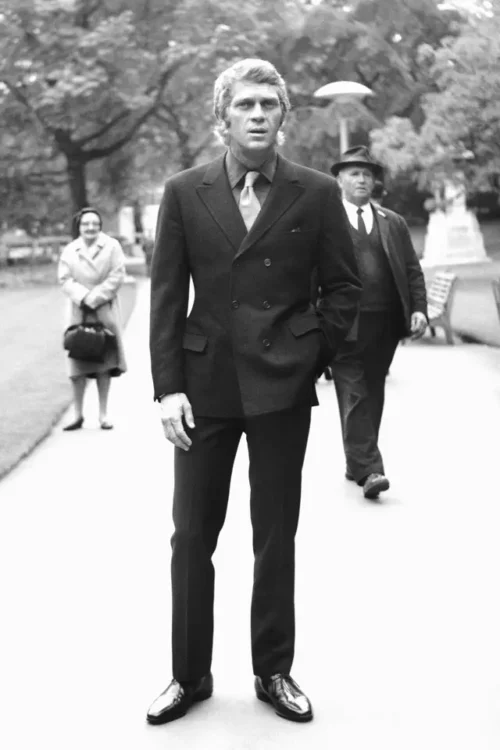
Björn Borg – The Blond Adonis of Tennis Style
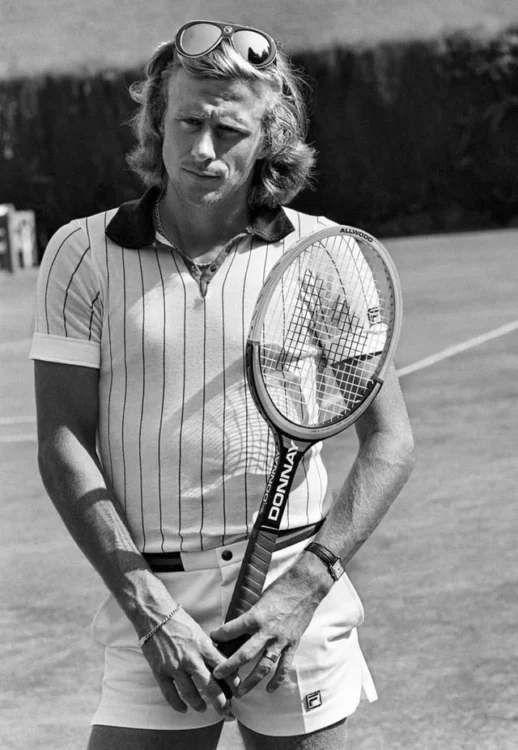
A five-time Wimbledon champion by the end of the decade, Björn Borg wasn’t just a tennis legend—he was a fashion phenomenon. With flowing blond hair, a stoic gaze, and his signature Fila headband, Borg brought Euro cool to center court. His short shorts, zippered warm-ups, and tight polos made sporty look sensual. The 1977 Wimbledon final, with Borg in navy Fila stripes and golden locks flying, sealed his status as a sex symbol in sneakers. He served aces—in fashion, too. image source
Bob Marley – The Rasta Revolutionary Who Made Roots Style Iconic
As the global voice of reggae, Bob Marley brought One Love and Redemption Song to the world—selling over 75 million records and becoming a cultural prophet. But his influence went far beyond music. Marley made Rastafarian style universal: military jackets, denim shirts, crocheted tams, and, of course, the red-gold-green palette. His look at the Smile Jamaica concert in 1976—dreadlocks swinging, in a denim work jacket and football boots—became an emblem of rugged Afro-Caribbean cool. Marley turned resistance into timeless style. image source
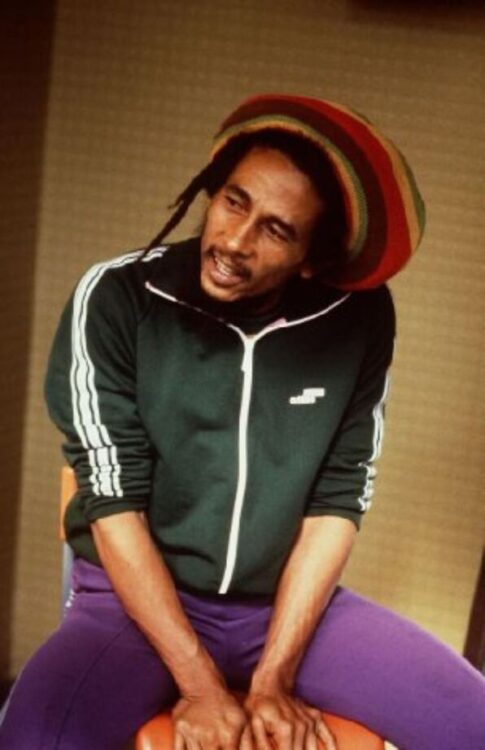
Shashi Kapoor – Bollywood’s Suave Gentleman of the 70s
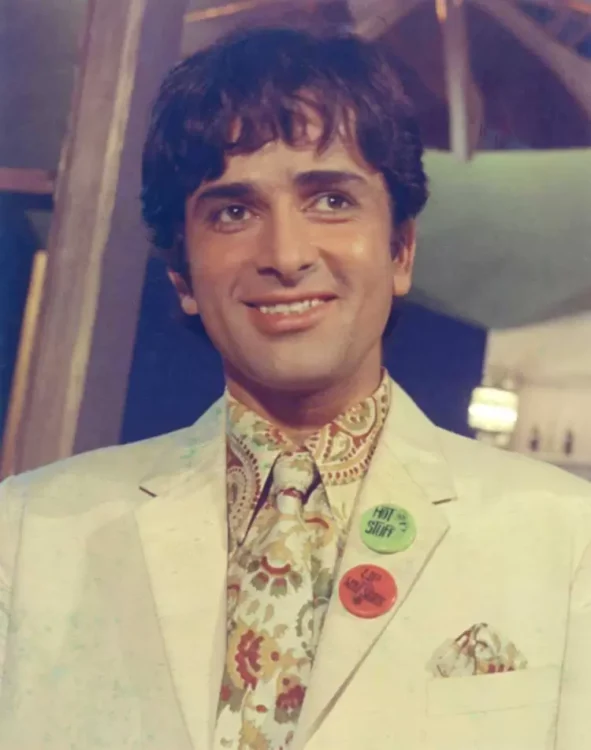
Shashi Kapoor, one of India’s most beloved actors, lit up the 1970s with his charm, talent, and impeccable sense of style. Known for acclaimed films like Deewaar, Kabhi Kabhie, and international works such as Shakespeare Wallah and Siddhartha, he embodied sophistication on and off screen. His penchant for sharply tailored suits, perfectly knotted ties, and harmonious shirt–jacket combinations gave him a polished yet approachable elegance. Shashi’s style was never loud—just effortlessly refined—making him a true global style ambassador and a timeless fashion reference from the era.
Giorgio Armani – The Tailor Who Softened Power
Launching his namesake label in 1975, Giorgio Armani revolutionized menswear with unstructured blazers and relaxed elegance. While not a performer, his role as a designer reshaped the modern man. He traded stiff suits for fluid silhouettes, perfecting the art of understated luxury. Armani himself—deep tan, cashmere turtlenecks, and monochrome minimalism—became an emblem of European refinement. His early advertising campaigns in the late 70s, featuring clean lines and languid masculinity, laid the foundation for the power-dressing of the 80s. Quiet, but seismic. image source
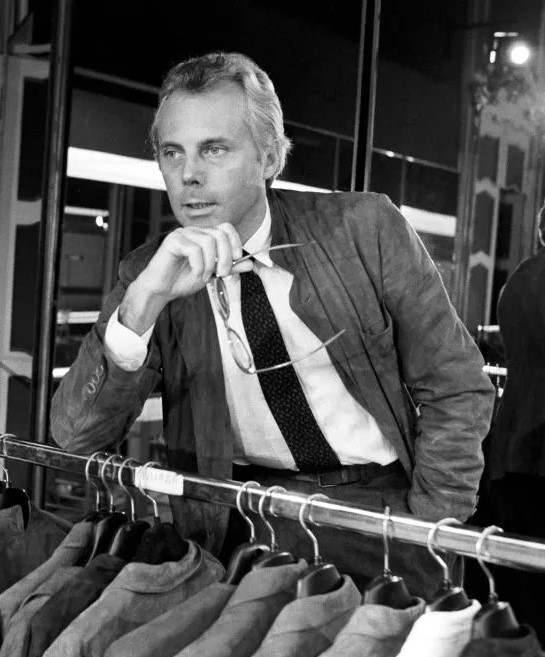
Barry Gibb – The Falsetto Crooner in Disco Satin
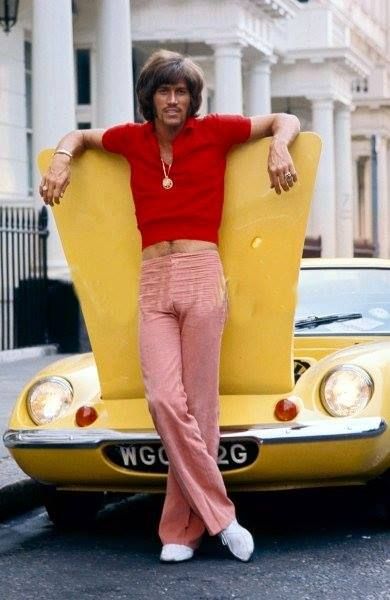
As the lead voice of the Bee Gees, Barry Gibb helped shape the Saturday Night Fever soundtrack and sold over 220 million records. But he also delivered peak disco glamour: open silk shirts, gold medallions, high-waisted trousers, and flowing lion’s mane hair. Gibb’s signature look—chest bared beneath a white satin shirt with flared pants—was replicated by nightclub goers from New York to Naples. He gave disco its shimmering visual language. If Jagger was rock’s rebel, Gibb was its glittering mirrorball.
Jack Nicholson – The Rebel Intellectual Draped in Attitude
With One Flew Over the Cuckoo’s Nest (1975) and Chinatown, Jack Nicholson became Hollywood’s most enigmatic leading man—edgy, intense, and impossible to ignore. His fashion followed suit: relaxed tailoring, tinted sunglasses, scruffy charm, and that devilish grin. He brought an anti-glamour cool to the red carpet, famously wearing an open-collared shirt and wide-lapelled blazer to the 1975 Oscars. Nicholson didn’t dress to impress—he dressed like he couldn’t care less. And in doing so, he created a new blueprint for intellectual masculinity. Pinterest
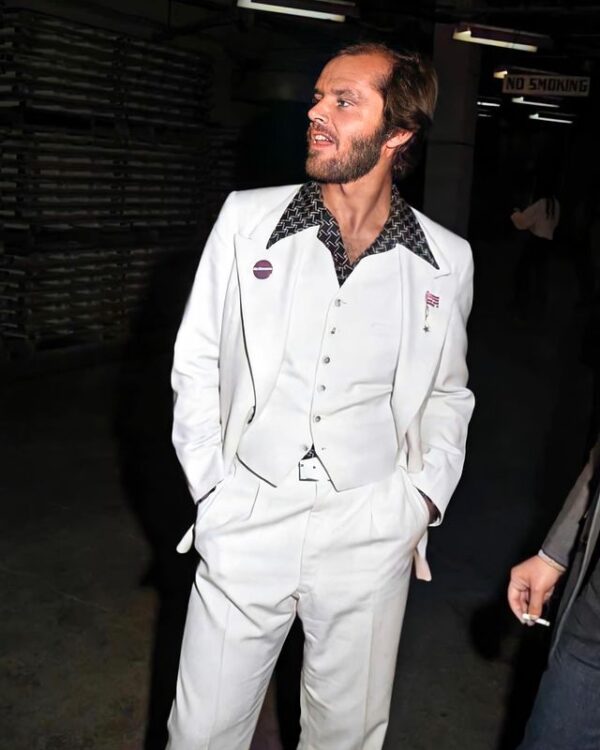
Robert Redford – The Sundance Sophisticate in Sun-Faded Denim
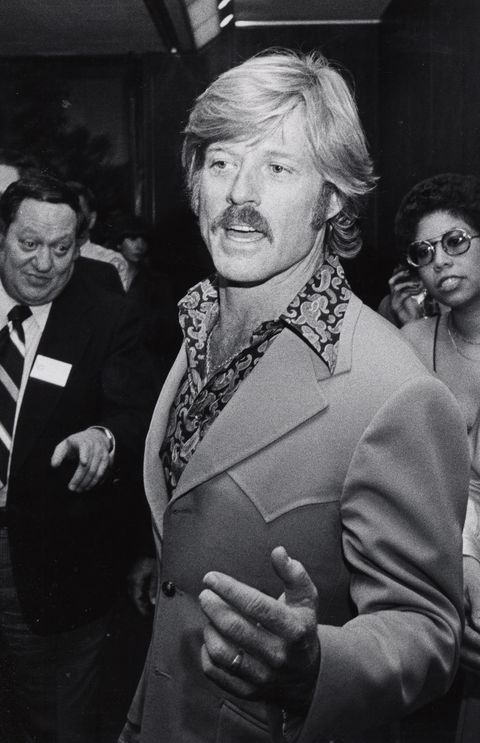
A cinematic golden boy and founder of the Sundance Institute, Robert Redford was the laid-back leading man of All the President’s Men and Three Days of the Condor. His style was a masterclass in American understatement—Western jackets, suede boots, turtlenecks, and sun-washed denim. That windswept, outdoorsy charm wasn’t accidental; it became iconic. His Great Gatsby look—crisp suits softened by boyish hair and quiet confidence—showed elegance didn’t have to shout. Redford proved rugged could be refined, and natural could be very fashionable. Pinterest
Pierre Elliott Trudeau – The Statesman Who Made Canada Cool
As Prime Minister of Canada, Pierre Trudeau wasn’t just a political figure—he was a walking contradiction in fringe jackets and cravats. Charismatic and unorthodox, he made bold fashion choices part of his persona: buckskin jackets, ascots, turtlenecks, even a cape. His arrival at Parliament in a full Edwardian morning coat sparked international headlines. Trudeau’s sartorial choices blurred the lines between leadership and personal expression. In a sea of drab suits, he stood out—proof that politics could have style, and swagger. image source

Richard Roundtree – The Blaxploitation Hero in Leather and Swagger
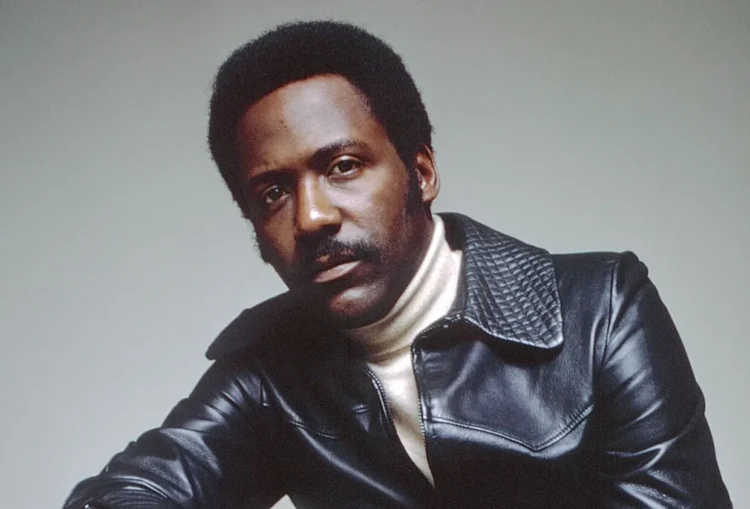
As Detective John Shaft in the 1971 cult classic Shaft, Richard Roundtree became the first Black action hero—and a 70s fashion icon. His signature look? Leather trench coat, turtleneck, tight trousers, and an attitude to match. Roundtree’s style was powerful, proud, and unapologetically Black. His influence rippled through streetwear and Black fashion in the decade to come. That first scene in Shaft, crossing a gritty New York street in full leather armor, wasn’t just cinema—it was a fashion manifesto. image source
Carl Sagan – The Cosmically Cool Astrophysicist with a Stellar Sense of Style
With Cosmos (1978) and bestselling books, Carl Sagan brought the universe into living rooms—and did so in signature style. A scientist with soul, he ditched lab coats for turtlenecks, corduroy blazers, and warm earth tones. His look, seen in endless press tours and TV appearances, was intellectual, serene, and timelessly elegant. The deep-red turtleneck beneath a tan blazer became his quiet fashion trademark. Sagan proved that curiosity was cool—and that one could dress for the stars without ever trying too hard.

Clint Eastwood – The Grit-and-Granite Cowboy in Quiet Cool
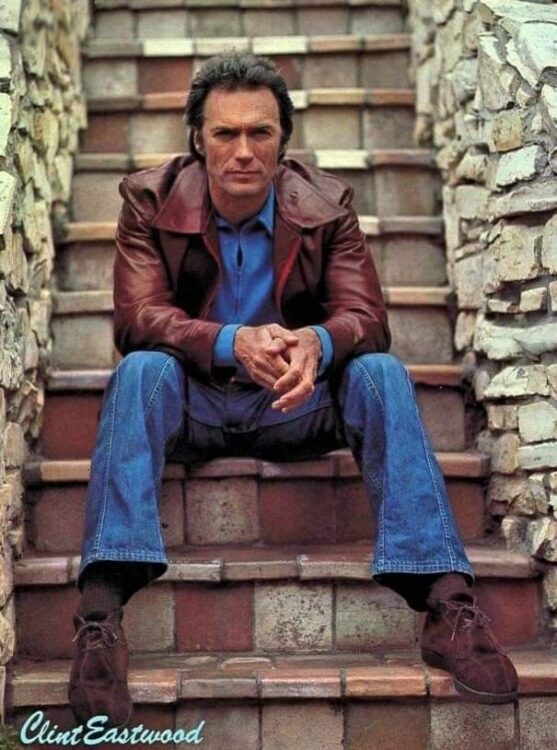
The face of Westerns and vigilante thrillers like Dirty Harry and The Outlaw Josey Wales, Clint Eastwood ruled the box office—and did it in stoic, rugged style. His off-screen wardrobe mirrored his characters: earth-toned jackets, denim, boots, and weathered leather. He rarely smiled, rarely flinched, and never overdid it. One iconic moment? The poncho-clad silhouette against a dusty sun in The Good, the Bad and the Ugly still defined 70s masculinity. Eastwood made minimalism dangerous—and desirable.
Johan Cruyff – The Dutch Master of Athletic Elegance
A footballing genius and three-time Ballon d’Or winner, Johan Cruyff changed the way the world played—and dressed—for sport. As the face of “Total Football” and an early Adidas collaborator, Cruyff turned the pitch into a fashion platform. His lean frame, orange kits, and striped training jackets created a cool, intellectual athleticism. The image of Cruyff walking off the field in his signature Puma shoes and track top—collar popped—embodied casual 70s swagger. He played with artistry and dressed with clarity.

Amitabh Bachchan – Bollywood’s Towering Icon in Wide Collars & Wider Pants

India’s biggest film star of the decade, Amitabh Bachchan ruled the screen with hits like Sholay and Deewaar, embodying the “angry young man” archetype. His 6’2″ frame became synonymous with long-collared shirts, bell-bottoms, slim belts, and aviator shades. Bachchan’s look was as magnetic as his baritone—sharp, bold, and undeniably influential. His Don wardrobe—white flares and polka-dot shirts—became instant street style across South Asia. He didn’t just influence fashion; he reshaped Indian masculinity with every outfit. image source
Freddie Mercury – The Crown Prince of Theatrical Masculinity
Queen’s powerhouse frontman, Freddie Mercury sold out stadiums with his four-octave voice and commanding stage presence. By the late 70s, he had transformed into a fashion icon, mixing drama with sensuality. Think harlequin jumpsuits, leather trousers, satin capes, and that unforgettable chest-baring glam. During the A Night at the Opera tour, he elevated rock performance into operatic fashion theater. Offstage, his silk blouses and stacked heels made elegant rebellion look effortless. Freddie didn’t just dress boldly—he owned every look.
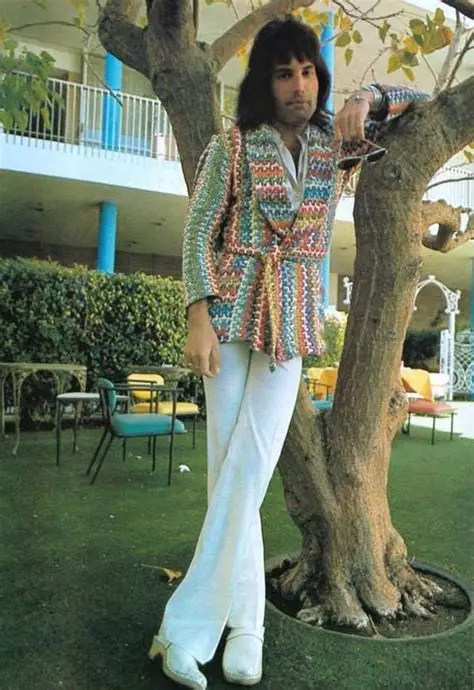
Calvin Klein – The Minimalist Who Made Sex Wearable

Launching his label in 1968 and hitting his stride in the 70s, Calvin Klein redefined American fashion. He stripped away excess and stitched sensuality into basics—clean denim, slim blazers, and streamlined silhouettes. His 1978 underwear campaign ignited controversy and sales, turning minimalism into a cultural force. Klein’s personal look—sharp suits, crisp white shirts, and quiet confidence—mirrored his brand: sleek, provocative, and modern. He wasn’t just designing clothes—he was shaping an aesthetic that would define the decades ahead. image source
These 25 icons were the very face of 1970s fashion. Whether draped in sequins, denim, velvet, or leather, they each defined what it meant to dress with personality, purpose, and a little bit of swagger. Their influence echoed far beyond stages and screens, shaping the way men saw themselves—and what they dared to wear. From glam rock to laid-back luxe, their legacy continues to ripple through runways, red carpets, and street style today. The seventies may be gone, but their style still turns heads.
Step back into the golden age of style—click here to discover the timeless fashion icons of the 1960s who set the stage for decades of sartorial brilliance.
